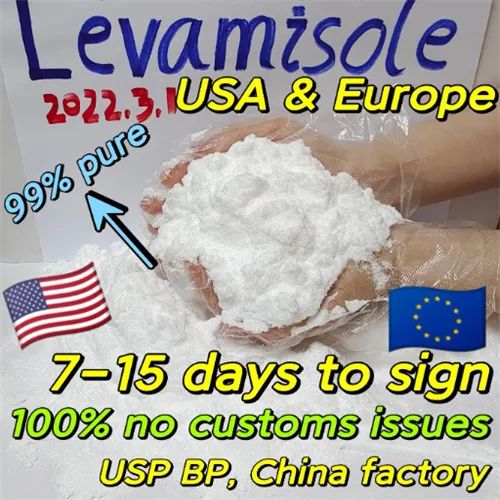Warning: Undefined array key "title" in /home/www/wwwroot/HTML/www.exportstart.com/wp-content/themes/1198/header.php on line 6
Warning: Undefined array key "file" in /home/www/wwwroot/HTML/www.exportstart.com/wp-content/themes/1198/header.php on line 7
Warning: Undefined array key "title" in /home/www/wwwroot/HTML/www.exportstart.com/wp-content/themes/1198/header.php on line 7
Warning: Undefined array key "title" in /home/www/wwwroot/HTML/www.exportstart.com/wp-content/themes/1198/header.php on line 7
- Afrikaans
- Albanian
- Amharic
- Arabic
- Armenian
- Azerbaijani
- Basque
- Belarusian
- Bengali
- Bosnian
- Bulgarian
- Catalan
- Cebuano
- China
- China (Taiwan)
- Corsican
- Croatian
- Czech
- Danish
- Dutch
- English
- Esperanto
- Estonian
- Finnish
- French
- Frisian
- Galician
- Georgian
- German
- Greek
- Gujarati
- Haitian Creole
- hausa
- hawaiian
- Hebrew
- Hindi
- Miao
- Hungarian
- Icelandic
- igbo
- Indonesian
- irish
- Italian
- Japanese
- Javanese
- Kannada
- kazakh
- Khmer
- Rwandese
- Korean
- Kurdish
- Kyrgyz
- Lao
- Latin
- Latvian
- Lithuanian
- Luxembourgish
- Macedonian
- Malgashi
- Malay
- Malayalam
- Maltese
- Maori
- Marathi
- Mongolian
- Myanmar
- Nepali
- Norwegian
- Norwegian
- Occitan
- Pashto
- Persian
- Polish
- Portuguese
- Punjabi
- Romanian
- Russian
- Samoan
- Scottish Gaelic
- Serbian
- Sesotho
- Shona
- Sindhi
- Sinhala
- Slovak
- Slovenian
- Somali
- Spanish
- Sundanese
- Swahili
- Swedish
- Tagalog
- Tajik
- Tamil
- Tatar
- Telugu
- Thai
- Turkish
- Turkmen
- Ukrainian
- Urdu
- Uighur
- Uzbek
- Vietnamese
- Welsh
- Bantu
- Yiddish
- Yoruba
- Zulu
Nov . 30, 2024 13:48 Back to list
Aspartame in Energy Drinks and Its Possible Health Implications for Consumers
The Presence of Aspartame in Energy Drinks and Its Potential Impacts
In recent years, energy drinks have surged in popularity, becoming a staple for both athletes and casual consumers seeking a quick boost in energy and alertness. One of the most common artificial sweeteners found in many of these beverages is aspartame. This article explores the presence of aspartame in energy drinks and examines its potential implications for health and consumer choices.
What is Aspartame?
Aspartame is a low-calorie sweetener, approximately 200 times sweeter than sucrose (table sugar), which has been approved for use in food and beverages in various countries since the 1980s. It is often used in diet sodas, sugar-free products, and, increasingly, energy drinks marketed as low-calorie or sugar-free alternatives. Aspartame is composed of phenylalanine, aspartic acid, and methanol, all of which are naturally occurring compounds. While the safety of aspartame has been recognized by numerous health organizations, including the FDA and the WHO, its use remains contentious among consumers concerned about potential adverse effects.
Presence of Aspartame in Energy Drinks
Energy drinks are typically designed to provide instant energy, increased concentration, and improved physical performance, often through a combination of caffeine, vitamins, and other ingredients. To appeal to health-conscious consumers, many brands choose to incorporate aspartame as a sweetener, positioning their products as lower in calories compared to traditional sugary energy drinks.
The presence of aspartame in energy drinks can be found in various forms, including sugary alternatives marketed for fitness enthusiasts or casual drinkers who wish to minimize caloric intake without sacrificing taste. The sweetener's intense sweetness allows manufacturers to reduce sugar levels significantly, thereby lowering calorie counts. As more consumers seek healthier options, the demand for aspartame-sweetened energy drinks continues to rise.
Health Concerns and Benefits
'the presence of aspartame in energy drinks and its potential'

The use of aspartame in energy drinks has prompted considerable debate regarding its potential health impacts. While many studies support the safety of aspartame when consumed within daily acceptable limits, there are ongoing concerns among certain population groups. For example, individuals with phenylketonuria (PKU), a rare genetic disorder, must avoid phenylalanine, one of aspartame's components, due to the risk of serious health issues.
Moreover, some consumers report sensitivity to aspartame, claiming that its consumption leads to headaches, dizziness, or gastrointestinal discomfort. These reactions are anecdotal and lack definitive scientific backing, yet they contribute to the hesitancy around products containing the sweetener.
On the other hand, proponents of aspartame argue that it offers a viable solution for those looking to reduce sugar intake without sacrificing sweetness. In a society increasingly concerned with obesity and diabetes, aspartame presents a lower-calorie alternative that can help mitigate the risks associated with high sugar consumption.
Consumer Awareness and Choices
Despite ongoing discussions about the safety and efficacy of aspartame, consumer awareness remains critical. Educating the public about the presence of aspartame in energy drinks can empower individuals to make informed choices aligning with their health goals. Regulatory bodies emphasize the importance of labeling, allowing consumers to readily identify whether a product contains aspartame.
As energy drinks continue to evolve, manufacturers must balance flavor, sweetness, and health consciousness. This necessitates transparency regarding the ingredients used and their potential effects. Consumers should be encouraged to read labels, understand what they are consuming, and consider their individual health needs before incorporating energy drinks into their routines.
Conclusion
The presence of aspartame in energy drinks highlights a complex intersection of taste, health, and consumer preference. While aspartame provides a lower-calorie alternative to sugar, its potential impacts on health require careful consideration. As more consumers seek healthier energy sources, the focus on ingredient transparency and public education will be paramount. Ultimately, understanding the presence of aspartame in these beverages can help consumers make choices that align with their health aspirations, fostering a more informed and health-conscious society.
Latest news
-
Certifications for Vegetarian and Xanthan Gum Vegetarian
NewsJun.17,2025
-
Sustainability Trends Reshaping the SLES N70 Market
NewsJun.17,2025
-
Propylene Glycol Use in Vaccines: Balancing Function and Perception
NewsJun.17,2025
-
Petroleum Jelly in Skincare: Balancing Benefits and Backlash
NewsJun.17,2025
-
Energy Price Volatility and Ripple Effect on Caprolactam Markets
NewsJun.17,2025
-
Spectroscopic Techniques for Adipic Acid Molecular Weight
NewsJun.17,2025

